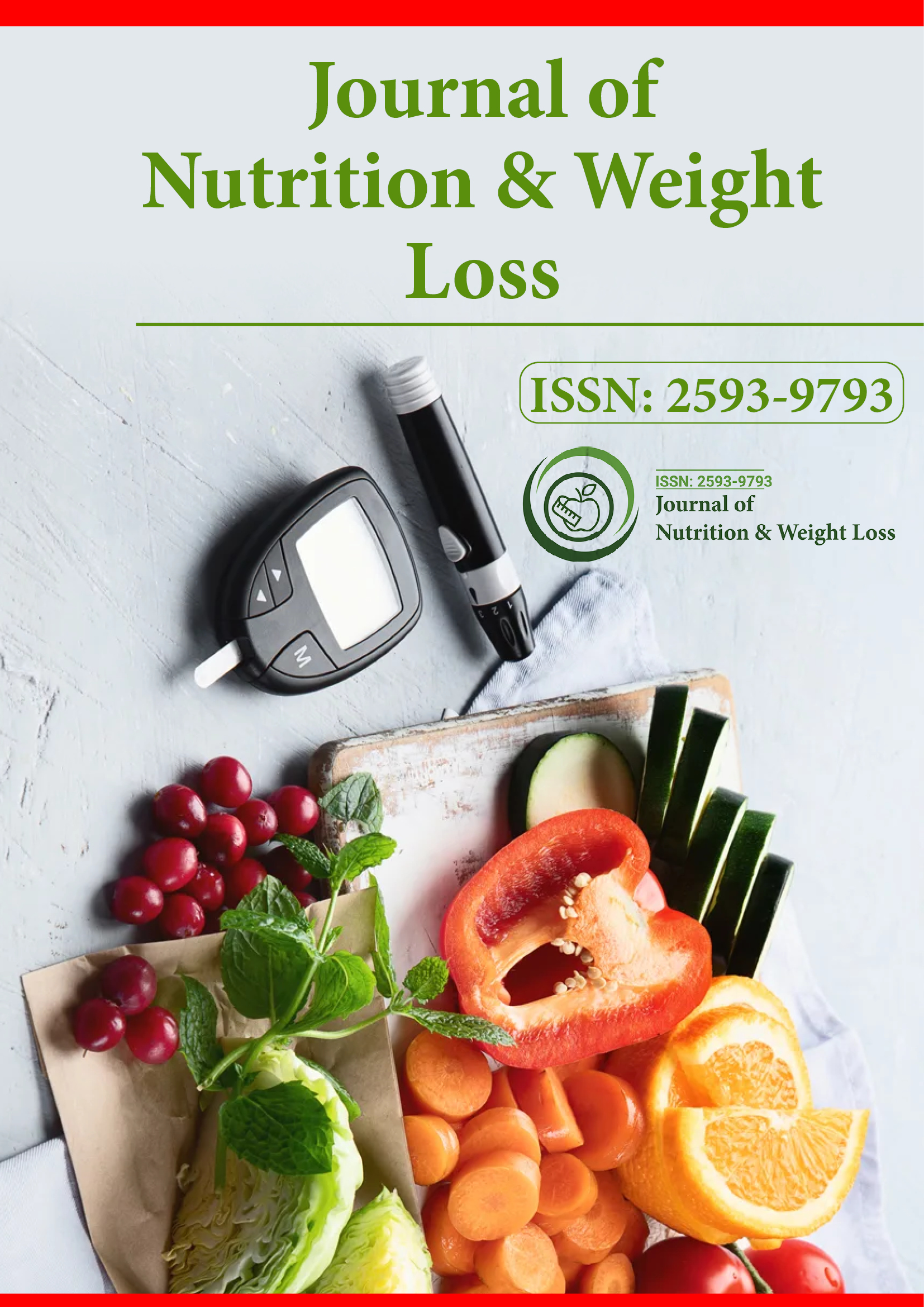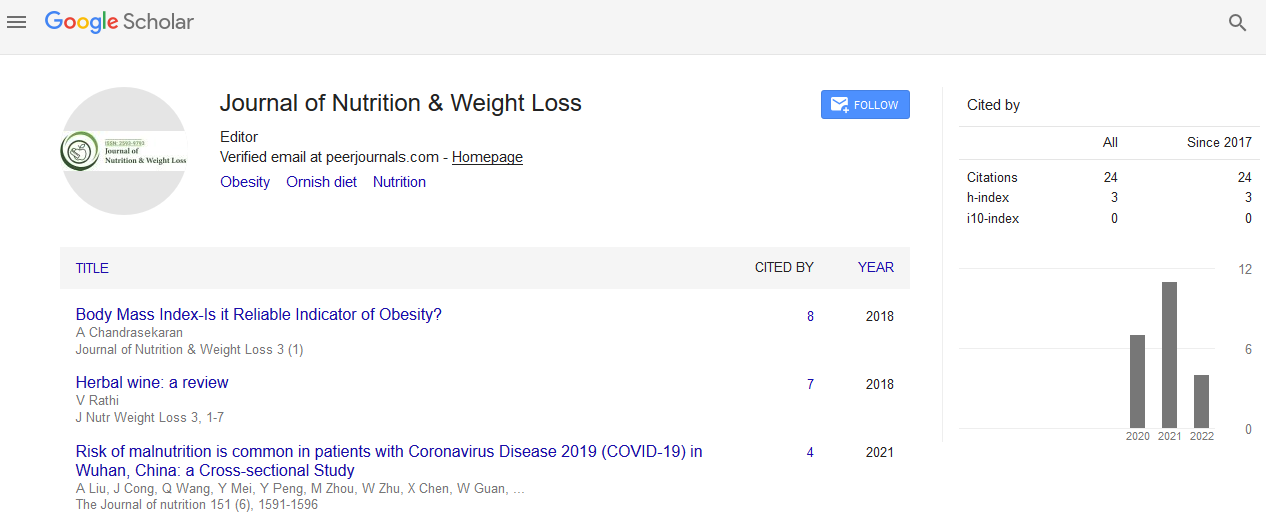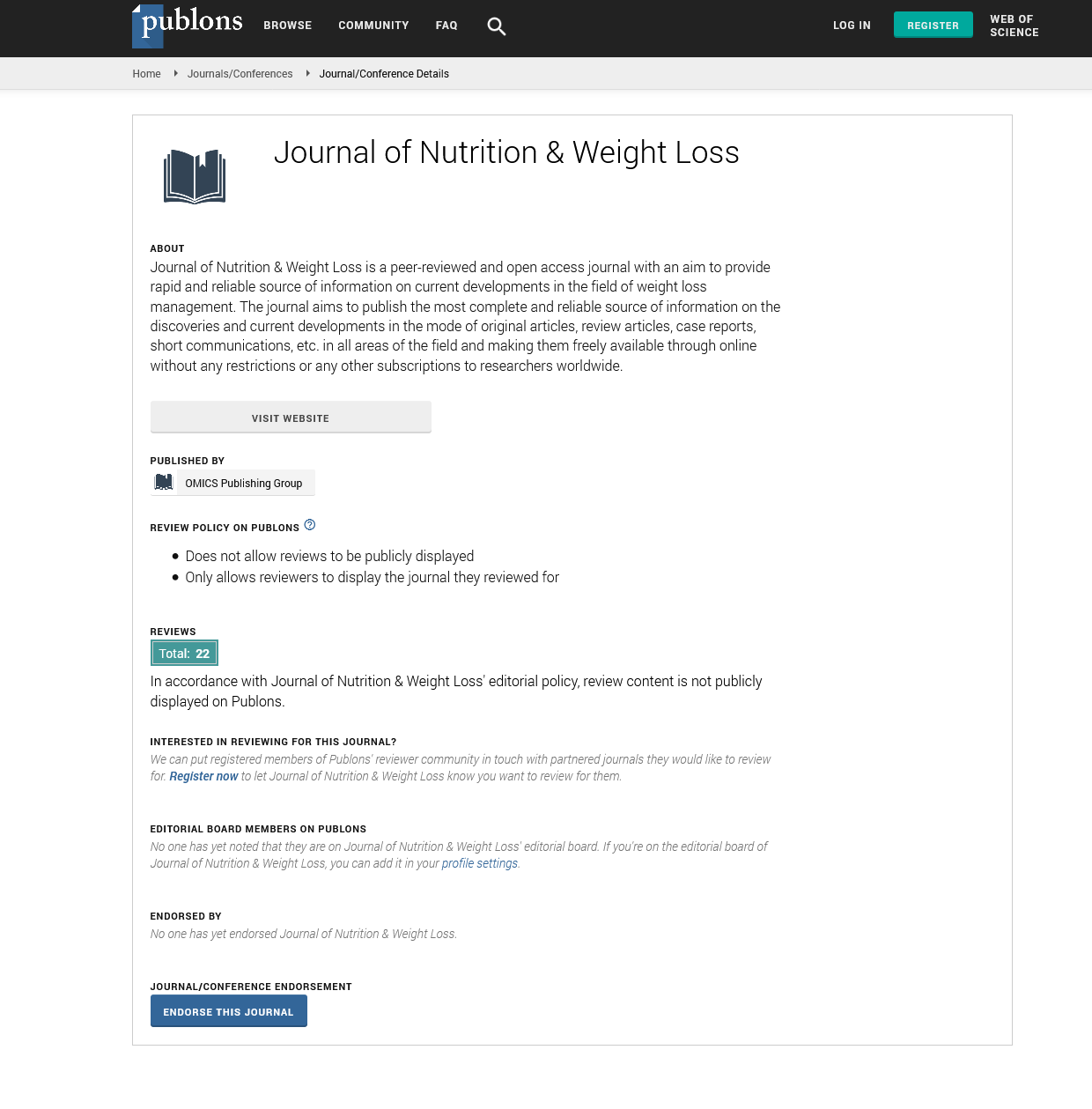Indexed In
- RefSeek
- Hamdard University
- EBSCO A-Z
- Publons
- Euro Pub
- Google Scholar
Useful Links
Share This Page
Journal Flyer

Open Access Journals
- Agri and Aquaculture
- Biochemistry
- Bioinformatics & Systems Biology
- Business & Management
- Chemistry
- Clinical Sciences
- Engineering
- Food & Nutrition
- General Science
- Genetics & Molecular Biology
- Immunology & Microbiology
- Medical Sciences
- Neuroscience & Psychology
- Nursing & Health Care
- Pharmaceutical Sciences
Commentary - (2022) Volume 7, Issue 3
Mechanism of Insulin Resistance in Obesity and Diabetes
Ali G. Deppmann*Received: 02-May-2022, Manuscript No. JNWL-22-16968; Editor assigned: 05-May-2022, Pre QC No. JNWL-22-16968 (PQ); Reviewed: 19-May-2022, QC No. JNWL-22-16968; Revised: 26-May-2022, Manuscript No. JNWL-22-16968 (R); Published: 02-Jun-2022, DOI: 10.35248/2593-9793.22.7.136
Description
Obesity and insulin resistance rates have risen dramatically in the last 30 years. These epidemics are linked to a huge increase in fast food consumption; until recently, it was unclear whether fast food was causing the obesity or vice versa. We examine the characteristics of fast food that make it an excellent obesogenic diet, as well as the processes through which it leads to obesity, with a focus on its effects on energy metabolism and central appetite control. Researchers evaluate insulin's role in the Central Nervous System's (CNS) regulation of energy balance and demonstrate the role of CNS insulin resistance as a cause of leptin resistance and in the promotion of pleasurable or "hedonic" responses to food after looking at the epidemiology of fast food consumption, obesity, and insulin resistance. Finally, we look at the properties of fast food that support the development of CNS insulin resistance and obesity, such as high energy density, high fat, high fructose, low fiber, and low dairy intake.
Aging is associated with an increase in fat, insulin resistance, and a higher prevalence of cardio metabolic disease. According to new study, weight loss caused by a decrease in calorie intake or an increase in energy expenditure improves insulin sensitivity and cardio metabolic risk factors in the elderly. While little is known about the impact of diet-induced weight reduction on individual variability in cardio metabolic and glycemic control outcomes, multiple studies have discovered considerable variation in individual responses to exercise-induced weight loss, whether or not dietary adjustments are adopted.
The role of central insulin in the control of hedonic eating is crucial. Insulin resistance in overweight people has recently been shown to reduce insulin's inhibitory function in the brain, but it is unclear how this relates to effective weight management, especially in the elderly, who are more susceptible to hyperglycemia and have age-related changes in their neural target systems for insulin action. Fifty overweight, pre-diabetic seniors took part in a double-blind, placebo-controlled pharmacological longitudinal fMRI investigation before and after being randomly assigned to either a 3-month calorie restriction or an active waiting group. Our findings suggest that baseline assessments of Individual Intranasal Insulin (INI) suppression of value signals in the ventral tegmental region associated to sweet food liking, as well as peripheral insulin sensitivity, might predict treatment outcome in dieters. With weight reduction, INI suppression of hedonic value signals in the nucleus accumbens improved, as did whole-body insulin sensitivity.
Non-homeostatic eating is exacerbated by easy availability to appealing food and an abundance of food-related stimuli. Nonhomeostatic eating has more metabolic and economic consequences than homeostatic feeding, and it contributes considerably to the worldwide obesity epidemic. The key central circuit that regulates the desire to eat is the mesolimbic dopamine system. Insulin and endocannabinoids (eCBs) are two significant, seemingly conflicting actors in the central and peripheral regulation of homeostatic and non-homeostatic eating. Insulin is thought to be a postprandial satiety signal, whereas eCBs are thought to be mostly pre-prandial orexinergic signals. The consequences of insulin and eCBs-mediated activities in the mesolimbic pathways are discussed in this review. Insulin and eCBs, we believe, play geographical and timecourse- dependent functions. We examine how their effects in the ventral tegmental region and nucleus accumbens converge to finely adjust dopaminergic activity and food intake, as well as how their processes interact.
Peripheral insulin resistance characterizes T2DM, which leads to -cell failure. Between 1980 and 2002, the prevalence of T2DM more than quadrupled, and it is expected to double again by 2050. Meanwhile, T2DM has grown almost 10-fold in the juvenile population, accounting for 30% of new diabetes diagnoses in children aged 11 to 18. Obesity and T2DM are inextricably related, since 46% of persons with T2DM have a BMI of 30 kg/m2 or more and even more are overweight. Insulin resistance is regarded to be at the root of the metabolic syndrome, which includes three of the five criteria: abdominal obesity, hypertriglyceridemia, low HDL cholesterol, hypertension, and high fasting glucose (NCEP ATP III definition). Metabolic syndrome is thought to affect 20% to 25% of the adult population in the United States.
Insulin is the major hormonal signal for adipocyte energy storage. Insulin hyper secretion by the pancreas is linked to the etiology of obesity in some cases. For example, diabetic mothers' new-borns tend to be big for gestational age, while diabetes patients who begin insulin therapy gain weight. Hypothalamic obesity, which is characterized by vagally mediated insulin hyper secretion, adds to the notion that insulin excess has obesogenic features. 20 Adults who hyper secreted insulin in response to an intravenous glucose tolerance test gained excess weight over a 15- year follow-up period in natural history studies; similarly, fasting hyperinsulinemia predicted weight gain in a group of Pima Indian children over a 9-year period, regardless of baseline BMI.
Citation: Deppmann AG (2022) Mechanism of Insulin Resistance in Obesity and Diabetes. J Nutr Weight Loss. 7:136.
Copyright: © 2022 Deppmann AG. This is an open access article distributed under the terms of the Creative Commons Attribution License, which permits unrestricted use, distribution, and reproduction in any medium, provided the original author and source are credited.


